6.28 Pile group effects on the lateral load response of piles
As in the case of pile groups subjected to vertical loads (Chapter 6.20), the response of a group of piles to lateral loadings depends on pile-to-pile interaction effects. More specifically, the lateral deflection of the piles in a group whose head is connected with a rigid pile cap will be the same, when a lateral load is applied on the cap. If the piles are in line (Figures 6.125a and 6.125d) the lateral soil reaction that will develop on pile #2 for given pile cap deflection is less than the lateral reaction that will develop on a single pile under the same deflection, due to the existence of piles #1 and #3 e.g., pile #2 lies in the “shadow zone” of pile #1. Similarly, if the piles are side-by-side (Figures 6.125b and 6.125e) the soil reaction on pile #2 is influenced by the “edge effect”, again due to the existence of nearby piles #1 and #3. In the more general case of skewed piles (Figures 6.125c and 6.125f), these two effects are combined, rendering the assessment of the pile group response more complex.
Based on the work of Bogard and Matlock (1983), Brown et al. (1987), and Reese et al. (2006), pile-to-pile interaction effects under lateral loading can be quantified, by multiplying the p-y curve of a single pile (estimated according to Chapter 6.27) with a reduction factor βg (Figure 6.126) that depends on the geometry of the group, the relative position of the pile in the pile group, and the direction of loading.
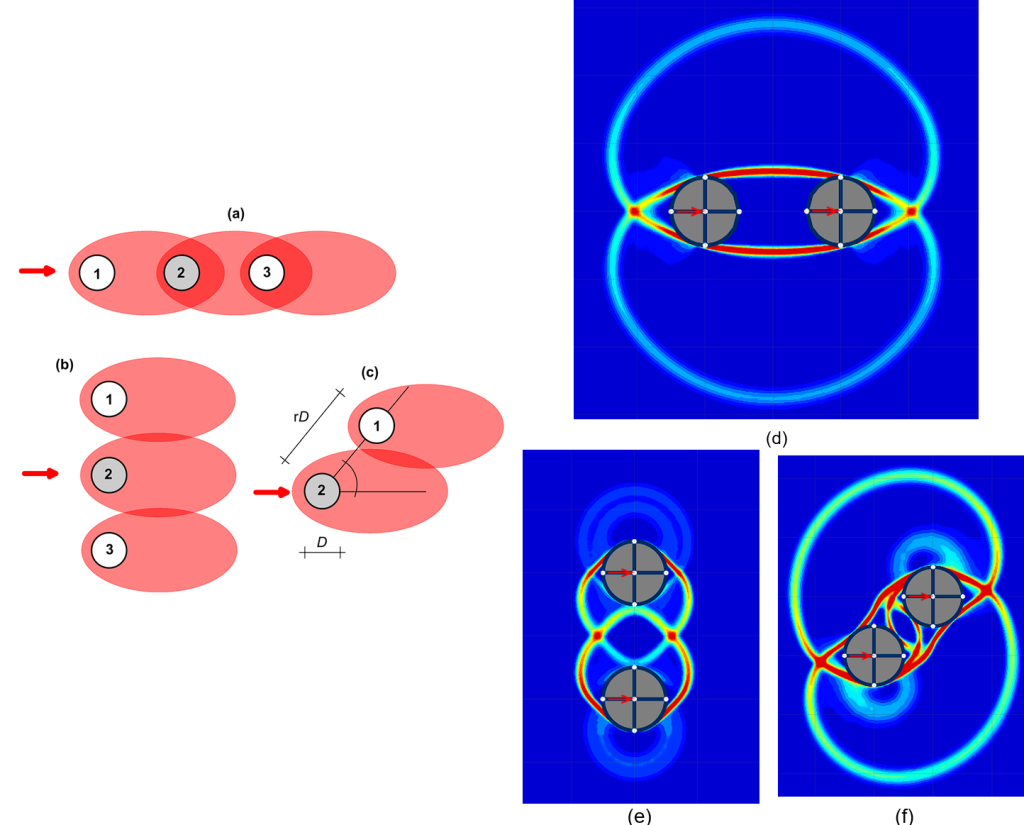
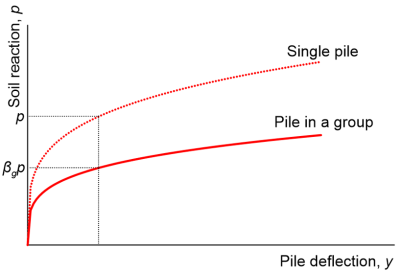
When the direction of the lateral load is perpendicular to the pile row (piles side-by-side), the reduction factor that accounts for interaction of any two side-by-side piles βg,s can be determined on the basis of Figure 6.127, as function of the piles’ centre-to-centre spacing/pile diameter ratio, s :
(6.157) ![]()
(6.158) ![]()
All piles in the group must be considered when estimating the reduction factor, as discussed later. In the simple case of three piles spaced at sD depicted in Figure 6.127, the reduction factor that needs to be applied to the p–y curves of the middle reference pile will be equal to the product of the interaction factors of the reference pile (ref) with each one of the two side-by-side piles (S):
(6.159) ![]()
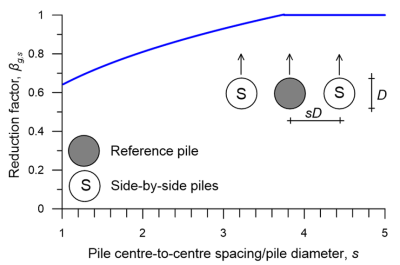
When the direction of the load is parallel to the pile row, the reduction factor for any given reference pile can be determined from Figure 6.128. For quantifying the interaction of the reference pile with the leading pile (L), Figure 6.128a is used to determine the factor βg,l. Similarly, for quantifying the interaction of the reference pile with the trailing pile (T), factor βg,t is determined from Figure 6.128b. The relevant expressions are:
(6.160) ![]()
(6.161) ![]()
(6.162) ![]()
(6.163) ![]()
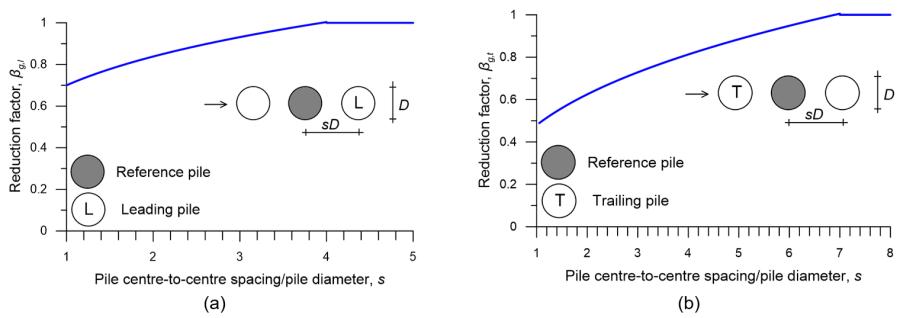
All piles in the group must be taken into account when estimating the reduction factor for each pile. In this simple case of three piles shown in Figure 6.128, the reduction factor of the middle reference (ref) pile will be equal to the product of the factor that accounts for interaction of the reference pile with the leading pile (L), and of the factor that accounts for interaction of the reference pile with the trailing pile (T):
(6.164) ![]()
In the general case of two skewed piles (Figure 6.129), the following procedure applies:
- Determine the factor βg,a from Figure 6.127 for side-by-side piles, while taking into account the distance between the pile centers, rD.
- Determine the factor βg,b from Figure 6.128 for in-line piles, depending which pile is considered (leading or trailing). Again, take as spacing the distance between the pile centers, rD.
Accordingly, the reduction factor for two skewed piles is estimated by means of geometric considerations as:
(6.165) ![]()
From the above it is clear that the value of the reduction factor depends not only on the arrangement (geometry and spacing) of the piles, but also on the direction of the load.
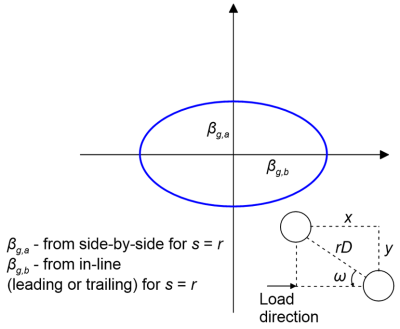
The above can be applied for determining the reduction factor of any individual pile in a multiple pile group. The group reduction factor of pile j in a group comprising n piles may be found by multiplying the reduction factors determined as above, while considering interaction with all the other piles in the group (Figure 6.130).
(6.166) ![]()
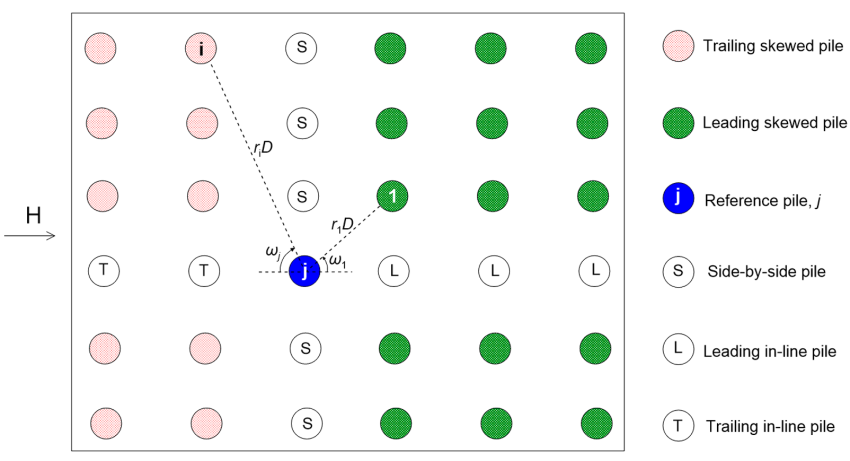
This procedure, which must be followed for each individual pile of the group, is demonstrated in the following Example 6.16.

